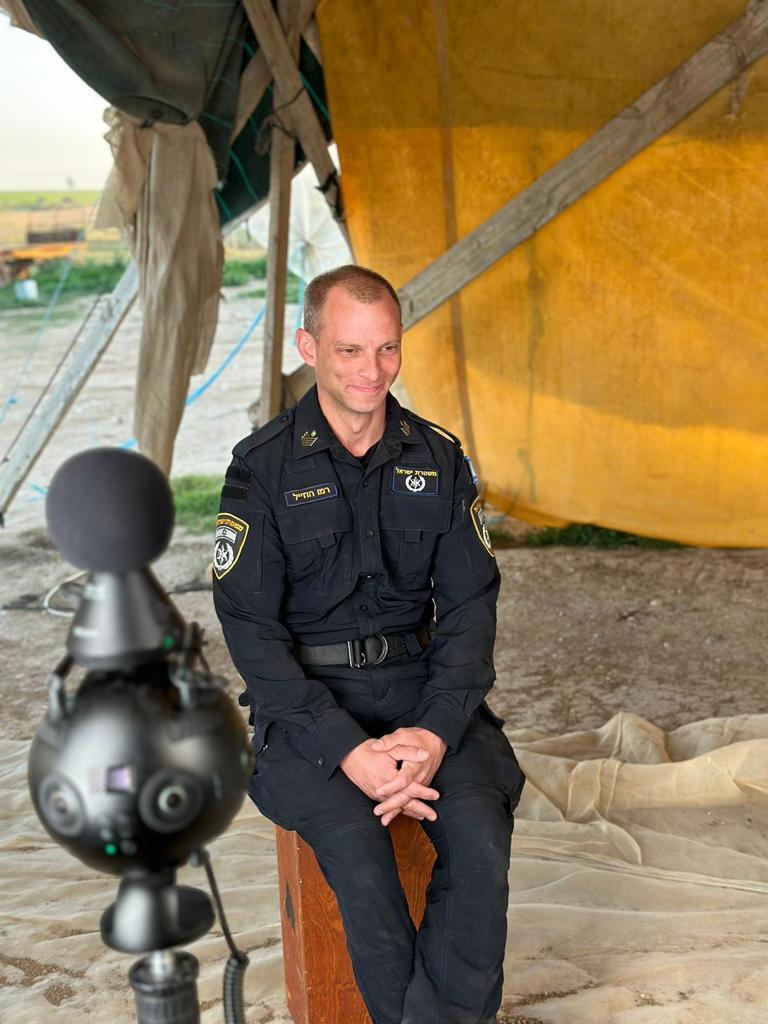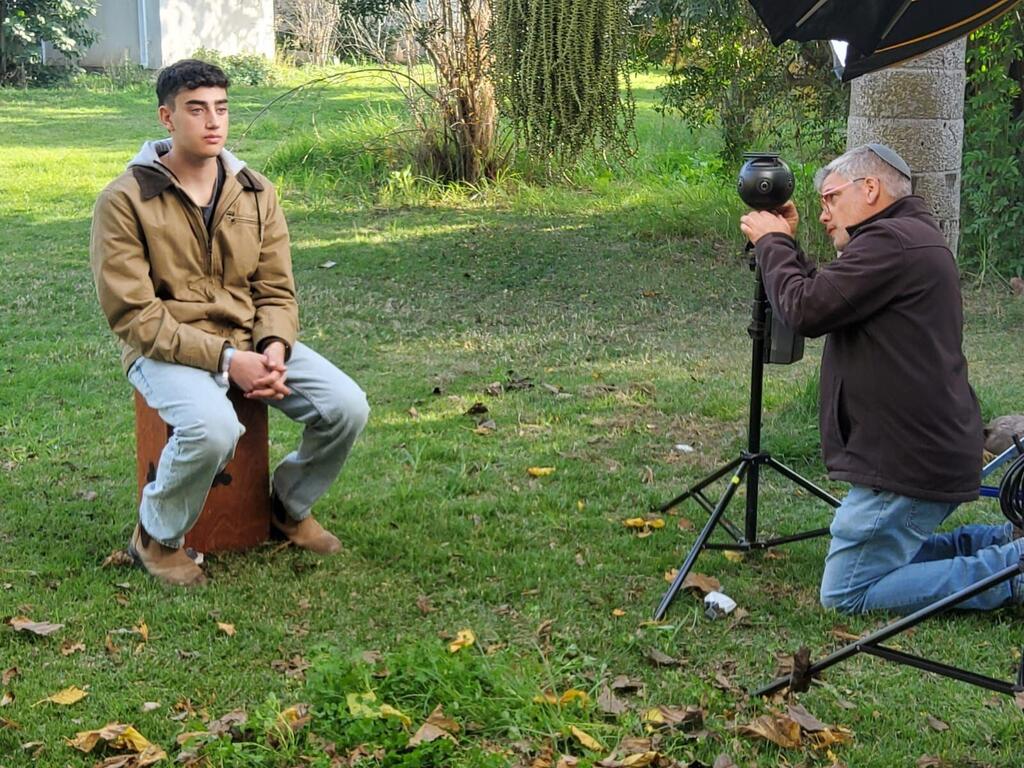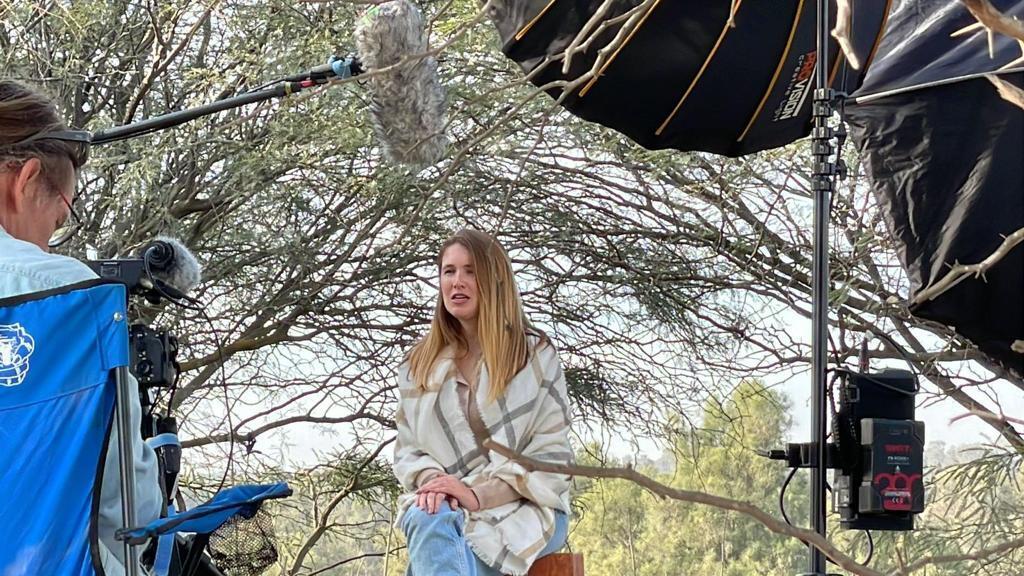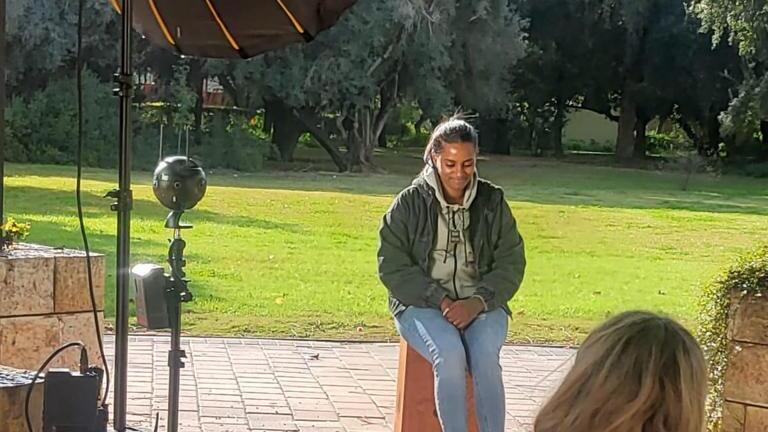Testimonies of October 7 in VR
(Video: Gilad Jalon)
A special camera captures Ofir Engel from every possible angle as he walks around Kibbutz Be’eri. Two and a half weeks after being released from Hamas captivity, Ofir returned to the kibbutz to relive what happened to him on October 7 - from the first sound of the alarms, through terrorists invading his home, until the moment he was abducted to Gaza.
Read more:
"It was hard for me to return to the place from which I was kidnapped, really hard to relive that situation," he said. "But I always remembered the important goal that led me to do it."
Engel's photos are part of an innovative project by the ISRAEL-is to present five testimonies from October 7 through virtual reality (VR). "I agreed to film my story because I understand the importance of distributing and explaining the disaster that happened to us," Engel said.
"I want anyone who wears this headset and experiences this day from my perspective to feel the shock we felt on that Saturday. They should be able to understand what I went through in those moments, see the place where all of this happened, and connect to the event," he added.
"Most importantly, I hope it will shake those who use them, that the users will better understand, both emotionally and visually, what happened to me and many others on that terrible day."
Five testimonies were recorded as part of the project, including Engel's, who returned from Hamas captivity after more than 50 days. Police officer Ramo Salman Al Huzail, who saved many lives in the Nova Music Festival massacre. Millet Ben Haim and Mazal Tazazo, both survivors of the party, and also the testimony of ISRAEL-is CEO and the project's initiator Nimrod Palmach, who fought as a reservist in the surrounding kibbutzim.
4 View gallery


Israel Police officer Ramo Salman Al Huzail saved dozens of revelers from Hamas terrorists at the Nova Music Festival
(Photo: Ophyr Hanan)
"We have to tell the story and give it everything, no matter how traumatic it is to be here. Look what happened here, we came to dance and have fun," Ben Haim testified as she walked through the site of the massacre at the party. On that Saturday, Ben Haim and her friends were in grave danger as terrorists chased them with shoulder-fired missile launchers. " It's sheer terror. All your soul wants is to disappear. All I wanted to drop to the floor and let things take their course."
They hid in a bush and prayed for help. They kept trying to get help from the police, friends and family non-stop, but no one managed to assist them as the gunshots drew closer. In the end, they managed to contact Rami Dadon, who went to rescue them with the help of Leon Bar, who is no longer with us.
This is not the first time that Ben Haim has shared her story. She has been interviewed by media outlets all over the world and even spoke at the German Reichstag. However, returning to the scene took her back to those moments and revealed memories she didn't know she had.
The commemoration project allows users to truly be with her and her friends in the conversation. "It's not imagining me; it's seeing me—being there and, most importantly, immersing oneself in the experience."
Tazazo, who couldn't hide from the terrorists, witnessed two of her friends being murdered in front of her eyes and received a blow to the head from the butt of a gun. She played dead, and that's what saved her life. The terrorists tied her legs and left her in the field. When the entire area started to catch fire, she escaped to the car of another hero who saved her.
"The goal is really to illustrate what was there and to show it to the world through our eyes. How we truly experienced this, how we survived it – and maybe this is how people will truly believe."
Not only testimonies but also a conversation
The project is Nimrod Plamach’s brainchild, conceived while he was fighting in the fields of Kibbutz Be’eri. Between one clash to the other, he was already thinking about the next battle – the battle for global perception and the narrative.
"When a student sits in their comfortable classroom in California, they don't feel what we felt here so intensely. We're doing some kind of "shock therapy" for the students, getting right up close with the person exactly in the bush where he hid in the small valley where he lay or entering the exact room from which he released hostages.”
Plamach enlisted an international volunteer team that previously worked on documenting testimonies of Holocaust survivors as part of the Spielberg Foundation and set out on this journey. According to the ISRAEL-is association, the project will begin operating on U.S. campuses as early as next March.
Each testimony consists of two parts – first, the user experiences a reenactment of the testimony. The second part is interactive. Each of the five participants answered dozens of questions that the project creators believed the target audience in America might ask them. This allows viewers to ask questions to the survivors and fighters and create a deeper interaction with the Israelis.
For example, in his answers, Engel also addressed sensitive topics such as the trauma he experienced as a captive, his daily routine in captivity, the moment he reunited with his family and the guilt he felt being released while others remained behind in Gaza.
"I think we are in a very, very strange era. Out of this huge historic amount of information, there is a lot of indifference, especially when you add antisemitism to the mix. I also think that something of such magnitude causes us to even deny as a form of defense mechanism," summarized Ben Haim. "When you're in it, it's much harder to ignore. Maybe the biggest thing I can say is that I feel the project better conveys how speechless we were."







